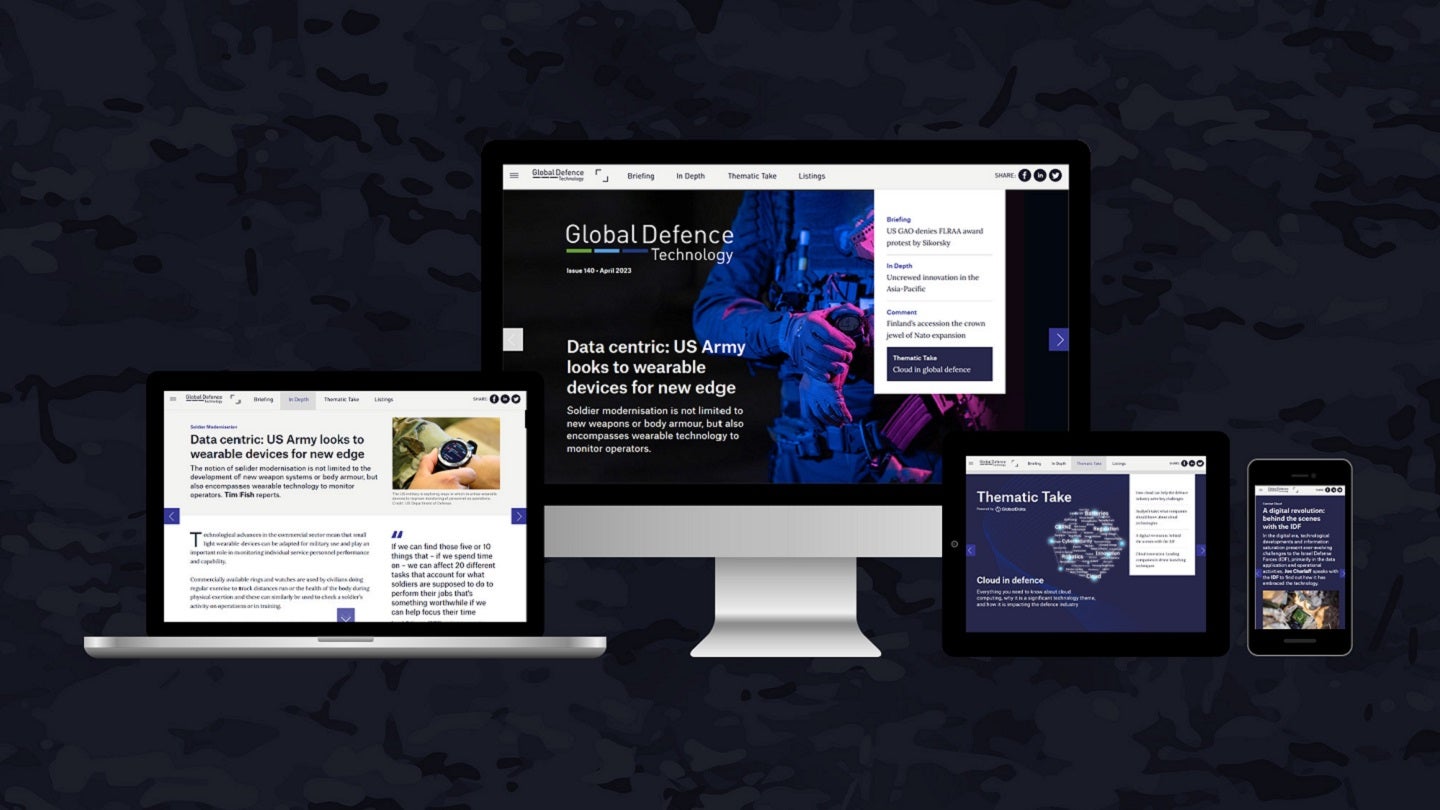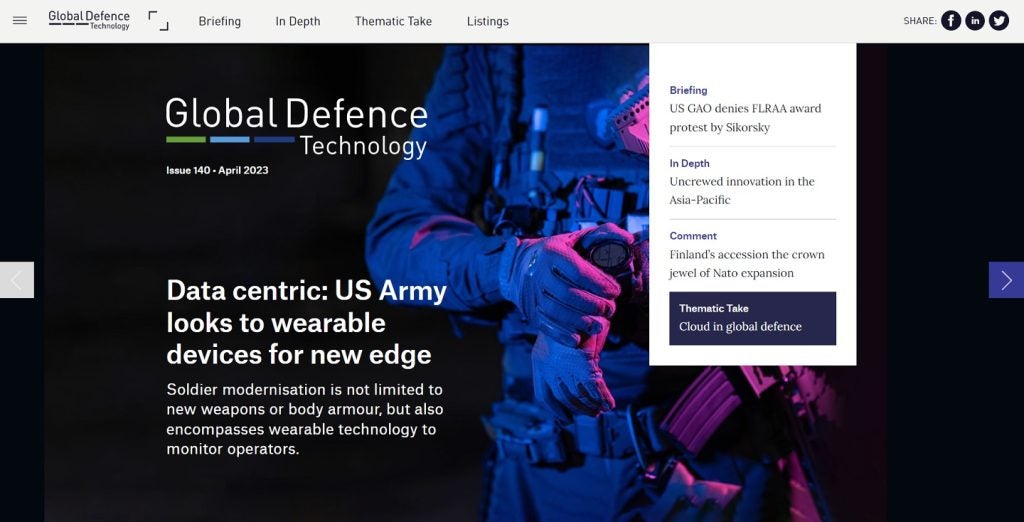
This latest issue of Global Defence Technology once more brings you all the latest insight and analysis into the technologies, policies, and influencing factors in the defence space.
In a world of metric-based analysis, the human performance of military personnel is also coming under the metaphorical microscope as services like the US Army explore how wearable technologies could help to inform on operator well-being and capability.
Elsewhere, the complex world of quantum computing and its likely impact on the defence sector, both in terms of cyber security and digital operations, is explored in an in-depth analysis of the UK’s own efforts in this evolving domain. With the March 2023 publication of its National Quantum Strategy, the UK has signalled its intention to be an early mover in the technology.
Also, don’t miss the latest insight, news, and data in the cloud thematic supplement, a brand-new addition to the title, which in each issue will provide a comprehensive analysis of emerging and disruptive technologies and influences affecting multiple sectors.
Whether you are desktop, tablet, or smartphone, you can read the magazine for free online.
Elsewhere, Global Defence Technology goes in deep on the newly announced AUKUS SSN platform which will see the US, UK, and Australia collaborate on creating an indigenous nuclear-powered attack submarine for use by the Royal Australian Navy. Both the UK and the US will share some of their most secretive nuclear technology, in a unique opportunity for Canberra to join the military naval nuclear propulsion family.
Finally, what can be said about Finland’s accession to Nato and taking its place at the 31st member of the defensive alliance? The decision by Russian President Vladimir Putin to invade Ukraine in February last year, which precipitated Helsinki’s decision to apply for Nato membership, was made in order to secure Russia’s borders and deter further expansion by the West. However, this decision has had the opposite effect and added 1,300km of border between Russia and Nato member states.
For all this and more, on sea and in the air, read on and follow the latest developments @DefenceTech_Mag.



